Leaf Credo first impressions
Before you start reading I have to make a few things clear.
I got my Credo last Friday night, so I’ve shot 1 session with it and a few loose shots (but put it thought it’s paces), I hate to do reviews like this to be honest if they are too technical, that’s why you will hardly find any 100% crops of resolution charts with my reviews, I just tell you how I think about the product. And of course you can ask whatever you want 🙂
In the market of digital photography it’s always interesting to see what manufactures come up with to draw the people to the stores and buy their newest gear. In the Medium format market it’s a bit more “relaxed” than in the DSLR market. Most medium format cameras are used in controlled areas like studios or with strobes on location so for example the whole high ISO race is of less importance (I do have to add that I don’t agree with this, I would love a digital back that can shoot noiseless ISO1600).
Somehow when we compare the medium format cameras and backs to modern DSLRs one could easily say that medium format is not interesting anymore, and with the release of the Nikon D800(E) a lot of people even claimed that medium format was “dead”, I was even interviewed by a magazine about the release of the D800 and the interviewer was surprised that my answer was that, although I love the way the development goes for DLRs, I really did not think you can compare a medium format camera with a DSLR, it’s all about the term “horses for course”. Now I hear you ask “Really, come on Frank”. So let me explain.
Let’s just only look at the sensor size, a medium format sensor like the Credo60 measures 53.9 x 40.4 mm while for example the Nikon D800(E) “only” is 24 x 35.9 mm which is a huge difference. Now what does that mean ? (and yes after that I do the review of the Credo 60).
The difference in sensor size is in my opinion very important for the “look” of the image, but also for the resolution and overall sharpness. The smaller the sensor the more problems you will run into when placing a lot of pixels in that area, this will translate for example in diffraction (loss of detail on smaller apertures) but also in noise (in which the D800 by the way performs great, so hats of for the Sony sensor). But more importantly for me is the DOF (Depth of Field), the larger the sensor the more you are able to shoot with a shallow depth of field in conditions where you normally can’t. For example an 80mm lens on a medium format camera is about 50mm on a full frame DSLR, this means that if you’re shooting from the same distance you will already get a lot less depth of field than with a DLSR. But we can also drop the ISO down to a real ISO50 with for example the Credo60 (even lower on some of the other Credo’s), this will give you another stop…. however it doesn’t stop there.
When using LS (Leaf Shutter) lenses you can sync all the way up to 1/1600, although you will loose some light around 1/1000 is the sweet spot for me, and this also gives you a lot more “playroom” to play with shallower depth of field. In real live this means that if you are shooting outside with strobes you can still get a very shallow depth of field but also cut down the ambient light. You can do something similar with a DSLR with small flash, ND filters or hyper sync with pocket wizards but those are all extra measures while the medium format camera does is by itself.
If that was the only thing… well one could say stay with a DSLR, it has faster AF, better High ISO, more frames per seconds, video etc. And that’s all true, actually I always use a DSLR as second camera and I would not want to be without it, but there is something about the quality of the images in the medium format files that is just so jaw dropping that for me not wanting to be without my DSLR also goes for not wanting to be without my medium format camera, the “roundness/3D” look of the images is stunning, the sharpness and color are without a doubt steps beyond any DSLR I’ve ever seen, when you look at skin tones the medium format cameras still rule.
So when Leaf announced their new Credo series I was more than interested to see what they would offer.
At first I was in doubt if I would upgrade my Leaf AptusII to the Credo40 or Credo60, there is rather big price difference but I decided to go for the Credo60 because of the full frame sensor (the Credo40 has a crop sensor).
The Credo 60
Let’s first make clear that I think 60MP is a lot.
Probably if they would have also made a 33MP version in full frame I would have upgraded to that one, but let’s be honest 60MP is also very cool, you can see detail that is just jaw dropping.
For fashion the high resolution backs were always a bit of a problem, I’ve been very active with the older Aptus 10 and 12, with the Aptus 10 I even shot a few sessions with the beta camera and loved it (although I did not really like the 3:2 output to be honest when looking back) so I’m used to the high resolution outputs, so it’s not the “new/wow” factor that makes me say this. The older backs were all great in detail which helps a lot with fighting moire (a problem that occurs on cameras without AA filter, but the missing AA filter also makes sure you get much more sharpness etc.) but they were also too slow for fashion shooting. In fashion shoots I love to shoot slow but I also love to say to the model “go wild” and just put the camera on auto shooting, with the AptusII 7 the pace was app 1.1 seconds per frame which is very nice to keep the model into her “groove” but also make sure she/he has time to change poses, with the Aptus 10 and 12 I always felt the pace was just a little bit too slow and the Aptus 12 for example slows down sometimes just a little bit, but enough to break the “pace”.
The Credo60 somehow solved this problem, it clocks in at a very nice 1 frame per second, I know it doesn’t sound like a big difference between 1.1 seconds per frame and 1 second per frame but when shooting it makes a huge difference, the Credo60 is perfect for the “go wild” sessions. I used the Credo60 this weekend in a workshop with a model that knows the Aptus II7 and even she commented that the Credo60’s pace was much nicer for her to pose to. And the fun thing….. it keeps the same pace on the card…..
This is also something I love about shooting with backs like the Credo and Aptus(II), there is NO buffer, meaning I can keep shooting until my hard drive is full, and even on the card I never ran into the buffer, when I try to keep the same pace with my Canon 5DMKIII I will run into buffer problems at about 1/3rd of the amount of images I like to shoot with those sessions, and waiting for the buffer to clear when the model is really getting into her thing is the most annoying thing you can imagine (and no shooting JPEG is not an option).
One of the things I always hated about the Aptus(II) series (and many many other medium format backs) was the display, to be honest I cannot imagine why the display was SO INCREDIBLY bad, the only thing you could use it for outside was making sure the strobe went off, but when using fill in flash you could really not see anything to check if you were getting the shot you wanted. This is one of the reasons I always shoot to my laptop on location, when I can’t I will use the DSLR. When looking at the money you pay for the backs one would expect a great display. This is also why I said after my last upgrade that I would only upgrade when there would be a kicka$$ display on the back that would destroy my DSLR experience….
When Phase One released the IQ series I have to be honest that I got a little bit excited, the display was gorgeous, but pricing was way out of my range to get the back I wanted, so I just hoped that Leaf would “borrow” that technology in their next series, when the AptusII12 (80mp) was released there was still the old display, but finally I got the information that there would be a new series with an amazing display, I could not wait 🙂
Well let’s make a long story short, the display on the Credo series is AMAZING.
During the workshop last weekend we took the camera outside in the bright sun and while one of my students struggled to see all the details on his Nikon display the Credo blasted out detail and light (on 80%) and made judging even the effect of dragging the shutter (very dark background) a breeze, holding my hand slightly above the display to block of the direct light even showed me the deepest shadows…. wow. Also zooming in has GREATLY improved, on the old back I actually never used it, way too slow, but on the Credo60 it’s tap tap on the place you want to see 100% and 1-2 seconds later (depending on the card you use, with 60mb/s cards it’s just under 2 seconds) you will see a razor sharp (if you focussed correctly) 100% view. However it does not stop there, you can use the strips around the display to scroll through the image (or just swipe on the image), or zoom in all the way up to 400%. This alone would give you a reason to upgrade from the AptusII to the Credo, it makes the camera from usable in the studio only (or tethered on location) to 100% usable on location even without the laptop, although I still love to shoot tethered.
Now I know people also wants to know about the high ISO noise.
Well it’s no DSLR that’s for sure, however for me it’s a step forward from the AptusII 7, I’ve shot some outside images on ISO400 and they were still very detailed, did show some noise but that was very fine and looking “nice” so ISO400 is without a doubt good enough for big prints and publications (remember it’s a 60MP back), but also ISO800 was very good, you can see noise which is usable, but there is also some smearing of details which is less attractive, on the other hand when I downsized the images to 30MP it was still showing loads of detail and the noise was hardly any problem. This is something that people will have to get used to, when you look at 60MP full res on a good monitor you will see “stuff” that you will NEVER EVER be able to see on a magazine print or even a big billboard. So I’m almost willing to say that even for publications I will have no problem using ISO800 outside, however for the moment I will say that ISO50 and ISO100 is great, ISO200 is no problem at all, ISO400 is more than usable and ISO800 can be used when you downsample the image (but only because other wise the client will look at 100% and maybe complain). I will do some tests under tungsten the coming weeks and will report on that via Google+ and add it here also as addition.
But there is more:
The Leaf Credo now supports USB3. Well it will soon, at the moment the connector is there but it still has to be activated.
Long exposures were a problem with the older Leaf digital backs, now exposures up to a minute should be no problem at all (still have to try this, but I believe them).
There is no more fan for cooling.
The battery changed from the outside to the inside, although this is a big advantage it’s also not possible anymore to use my very nice (but large) replacement batteries, on the AptusII 7 I used replacement batteries to run the back almost a whole day on just one battery while the original batteries lasted maybe 1-2 hours (when lucky), However in the Credo you can now use the Canon BP series batteries and they are rated at 2900mAh Li-ion which is already a lot better than the 2300 old batteries. I will search online to see if I can find some alternatives with more power. But I think the originals will also do just fine, and seeing the price of the BP batteries you can always throw a few in your back, they are cheap.
So are there no problems ?
Well yes and no.
At the moment there is no support for the Leaf IIQ files in Lightroom or Photoshop, BUT…. this will be solved within a few weeks (hopefully less), the IIQ L files will be supported in the next release of Adobe Camera Raw and therefore lightroom and Photoshop, so this is just temporary. For Aperture users there is big problem as it looks now, I see no support for Phase One in Aperture so I’m afraid the Credo’s will never/or very late be added to Aperture (this was also one of the reasons I switched to Lightroom a few weeks ago, and never looked back to be honest).
Also the firewire cable is in a weird location, when the cable is in the camera and you use a straight cable (most people use those) it hits my face when I’m not careful, however I will loose firewire as soon as USB3 is supported so also this is just a moment of annoyance to be forgotten when we have USB3 support.
And (but this is my problem) at the moment I can’t shoot tethered on my new MBP, this is not Leaf’s fault by the way but Apple still did not release their TB to Firewire cable 🙁 On the other hand the USB3 card reader from Lexar is so incredibly fast that I can shoot images on the card and download them very quickly, and this will also be solved soon when the cable is released.
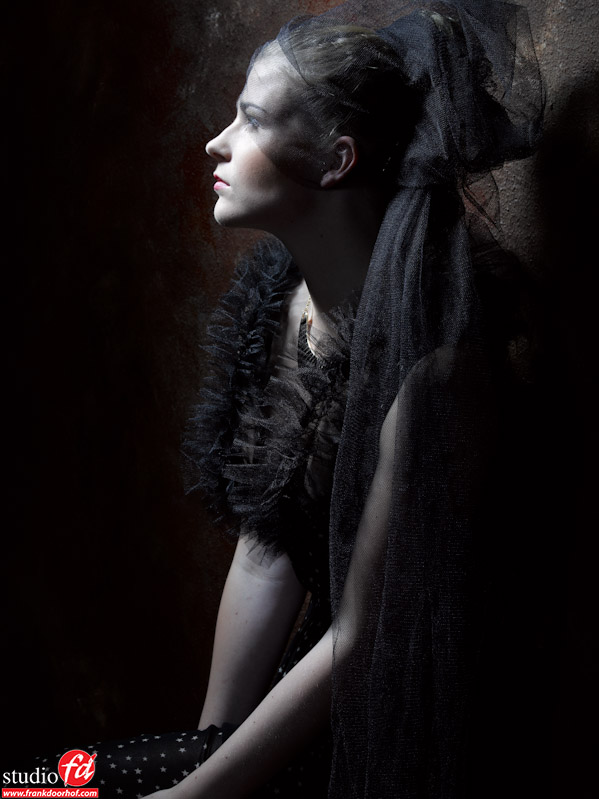
For the tech lovers, some specs:
CCD size : 53.9×40.4mm
Active pixels : 8984×6732
Resolution : 60MP
Aspect ratio : 4:3
Pixel size : 6.0 Micron
Dynamic range : 12.5 f-stops
Exposure time : 1/10000 – 60 seconds
Full resolution capture : 1 frame per second
Color depth : 16 bits (65.536 levels per channel)
Display : 3.2″, 1.15MP bright light touch display with 170 degrees viewing angle
Image viewing : 6 images at once on the display, zooming till 400%
Onboard tools : Live view, spirit level, ISO, white balance, Histogram, Exposure alarms, Image rating, custom functions.
Supported cameras:
Mamiya: Mamiya 645DF/645AFDIII, Mamiya RZ (all types), Mamiya RB
Phase One: 645DF, 645AF, iXR
Hasselblad: V-series (except for 200 and 2000 models), H1, H2
Contax: 645AF
View/technical: Most 6×9 and 4×5 in cameras via Leaf Graflok or 3rd party adapters
Other: Fuji 680 and Bronica ETRSi/SQAi via 3rd party adapters
And how big are the files ?
Well….
Let’s say my wife will sell a bit more hard drive space to me in the coming year.
The retouched tiffs (16 bits) weigh in at a stunning 363MB, yeah won’t be mailing those to someone.
The raw files are around 35MB on the IIQ S setting, but I would not advise to use that because for the moment only the IIQ L files will be supported in Adobe products and those files are a still manageable 58-68MB in size. This does mean that I will change my 16GB cards to 32GB cards, which is not a real problem with the pricing of the CF cards today.
Conclusion
I LOVE the new Credo 60, it’s a very “sexy” back with a great display and it’s FAST.
The resolution is nice (and I can’t wait to do some real detailed shots with this back).
Color and sharpness are amazing like I’m used from Leaf, the “roundness/3D” look is even better than with my old AptusII 7.
USB3 is a really good addition seeing that Apple is dropping Firewire800 from their MacBookPro series.
Now the big question, “should I buy a Phase One IQ or the Leaf?”
There are differences between the two, and not only in price.
At first the Phase One uses hard buttons while the Leaf uses a touch bar and touch buttons (which I prefer)
The Gui is different and some things are “missing/different” like focus masking which is missing on the Leaf, the IQ has sensor+ and would be better for longer than 1 minute exposures.
To be honest I think the Leaf is the better buy, it’s cheaper and I love the design more but this is very personal of course, however the price difference is more than enough to even if you don’t like the design better, to start loving the design.
And for the people who are wondering how a 100% crop looks…. (taken from the third image in the post)

And because you guys asked…. another 100% crop of one of the blog shots.

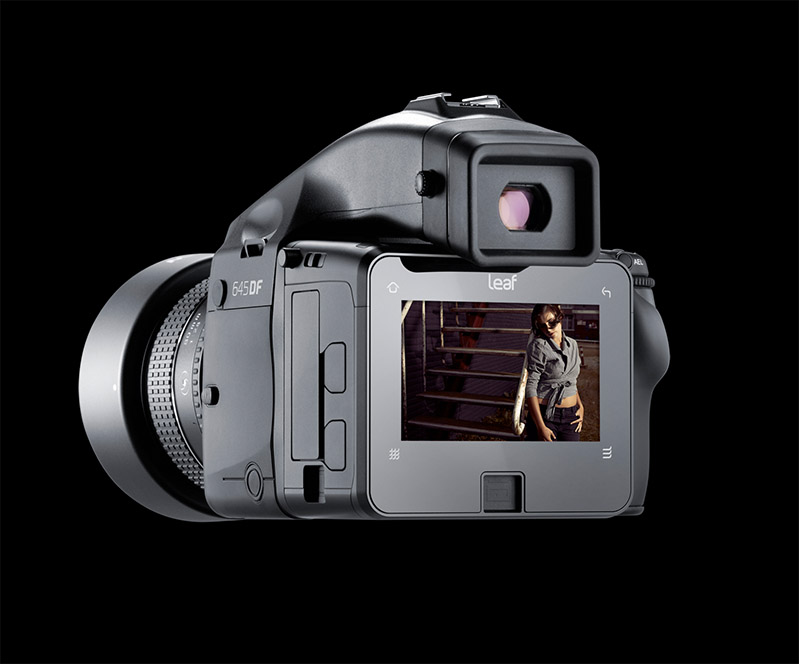
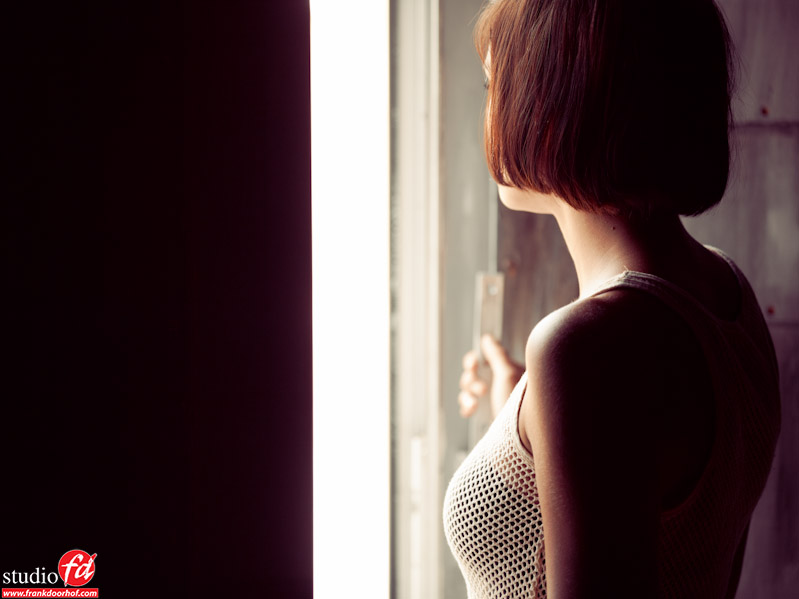
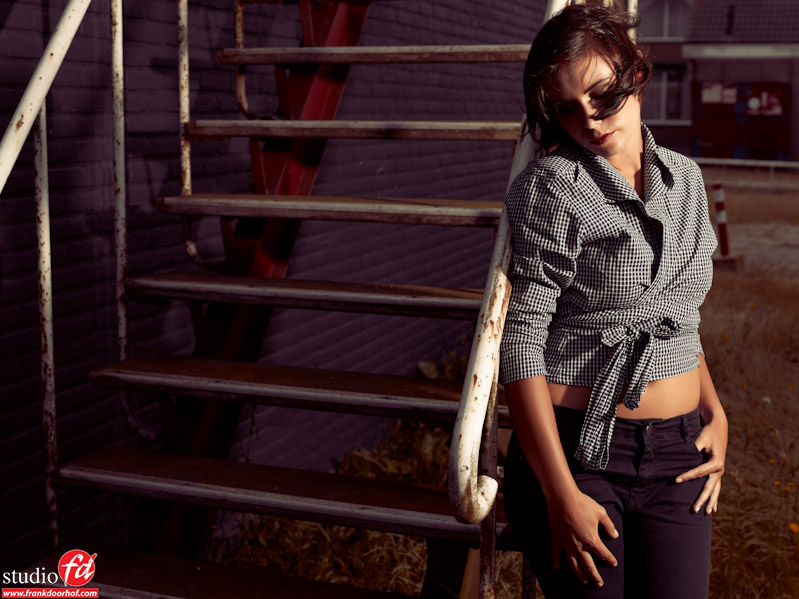
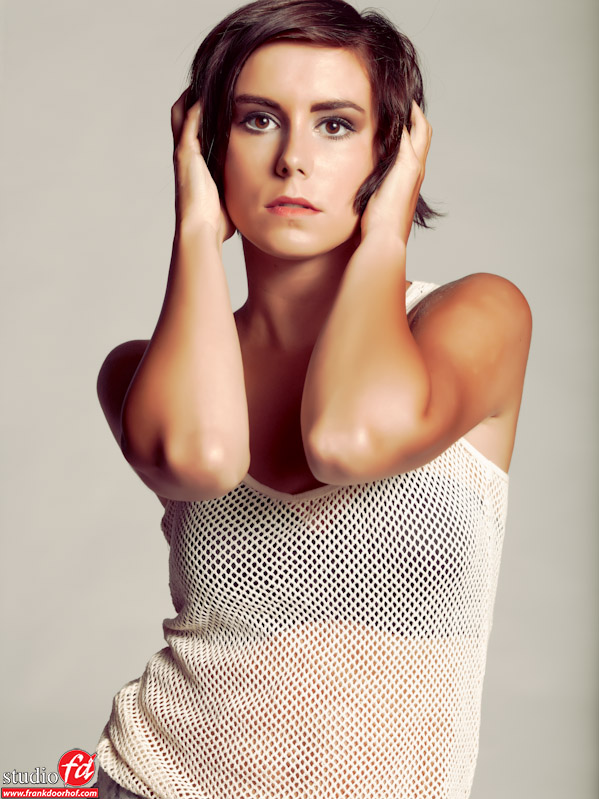
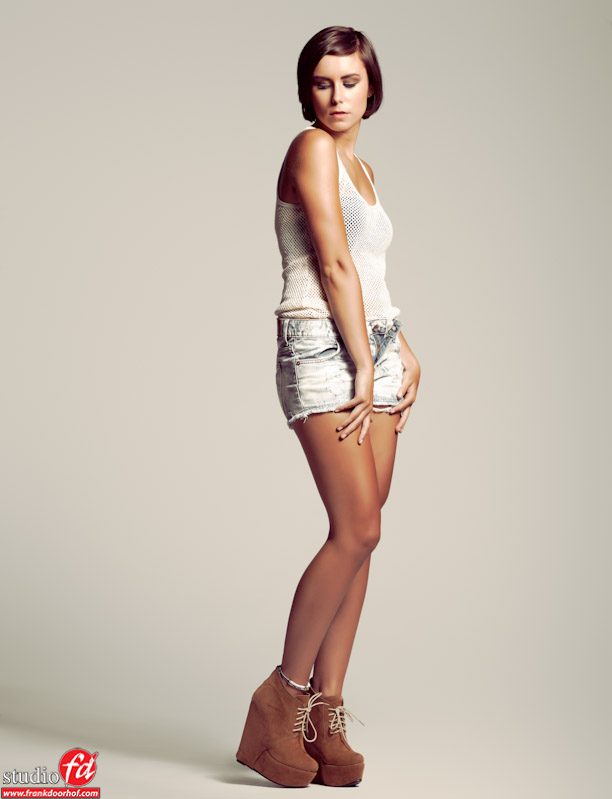

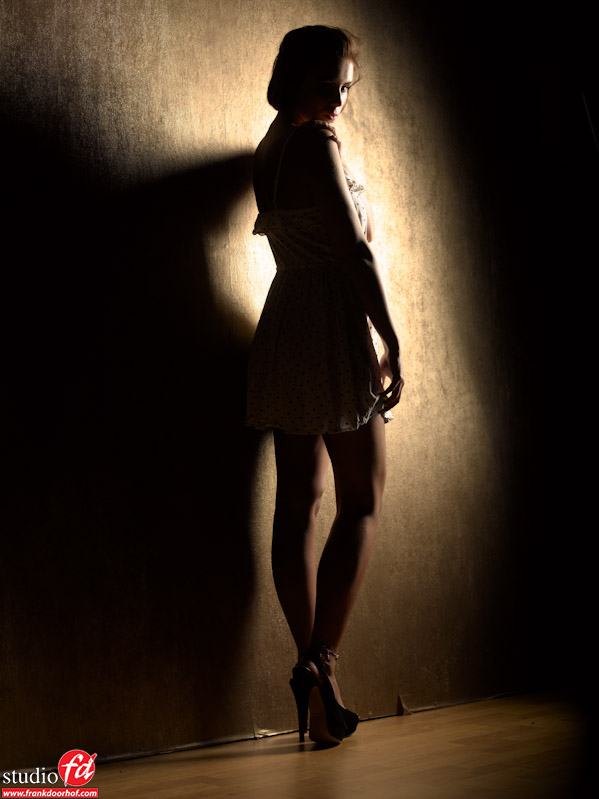
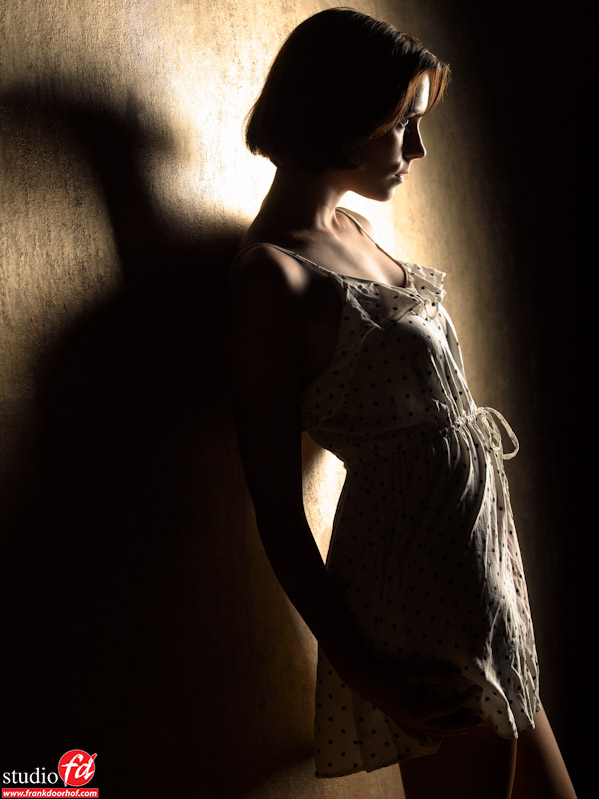

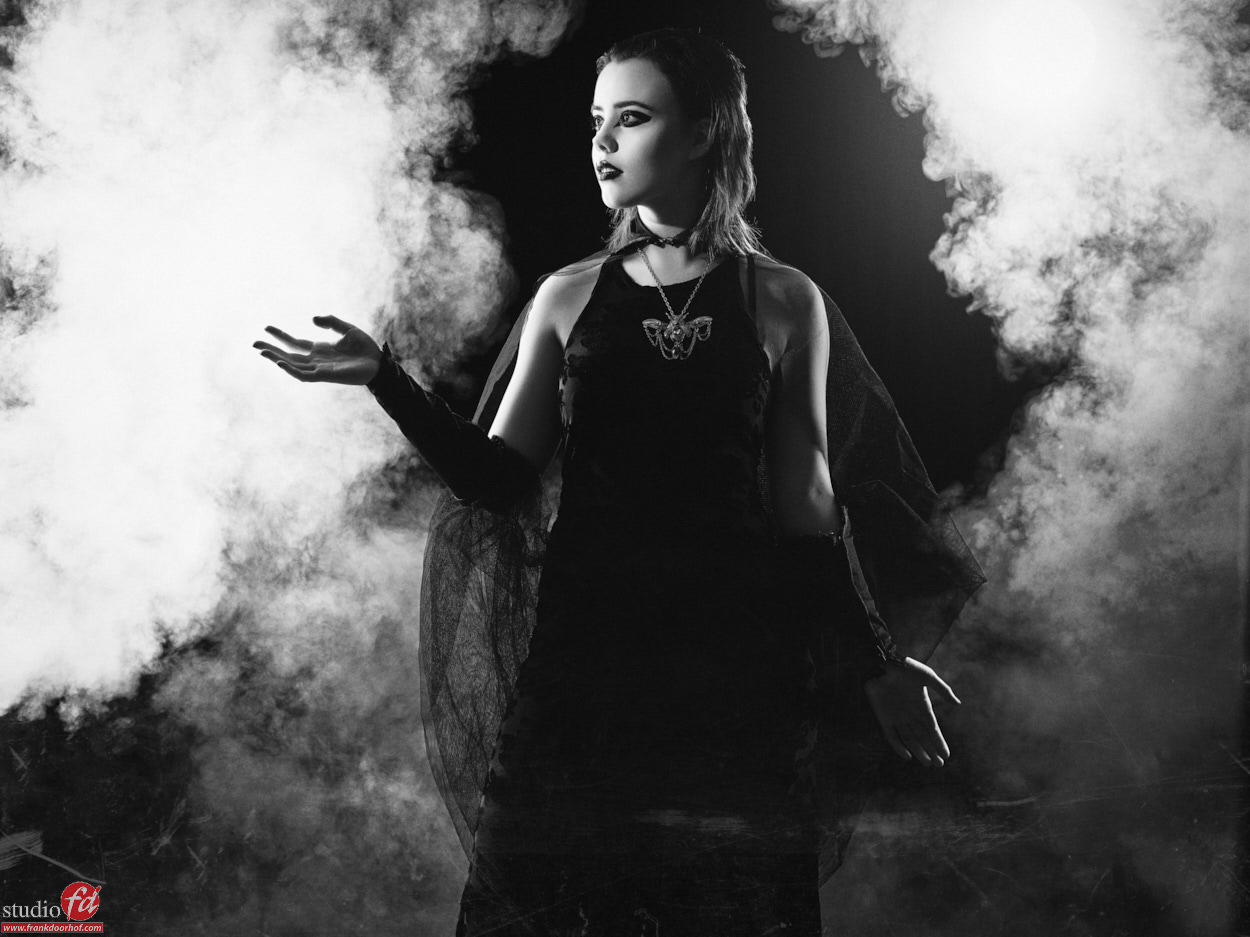
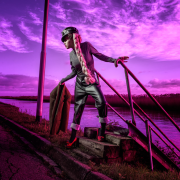
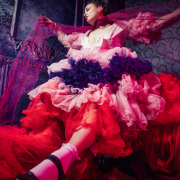
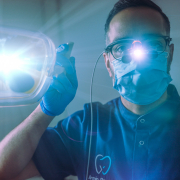
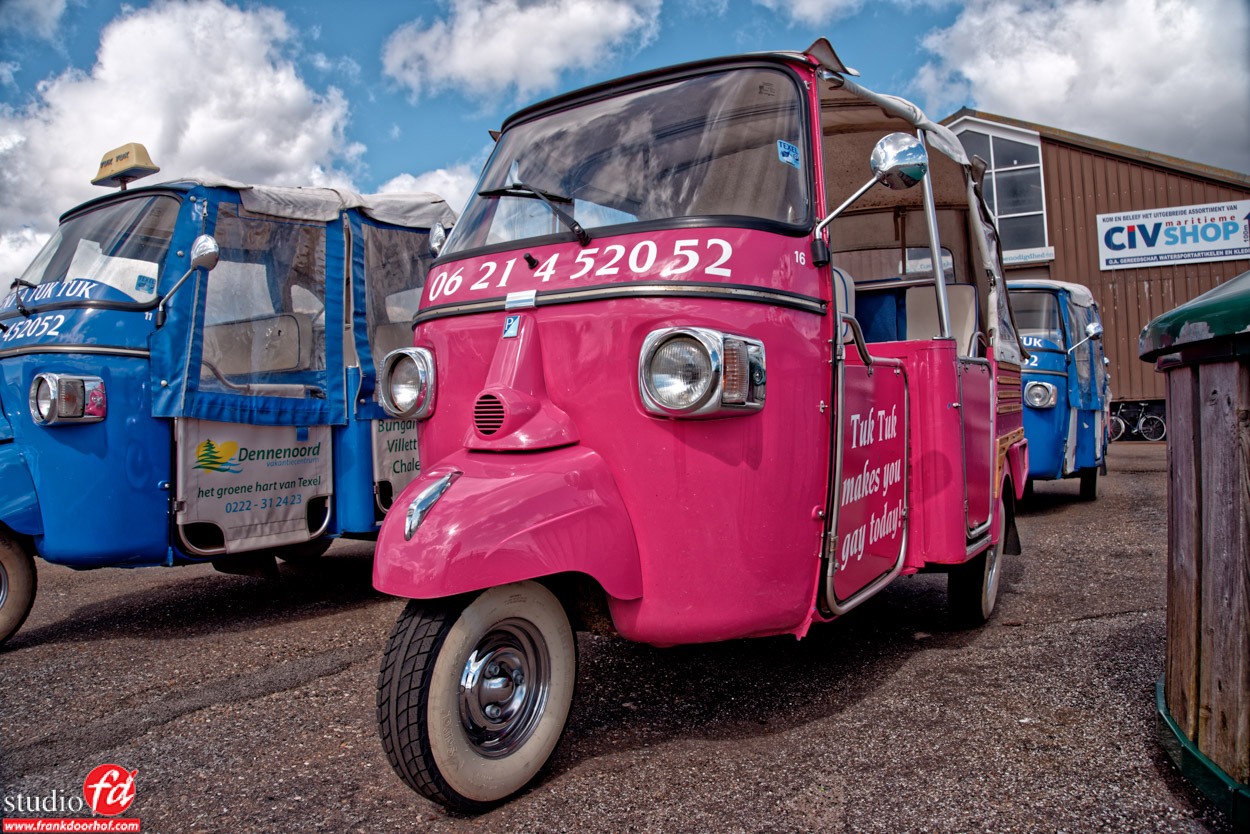

This is a very “sexy” photo shoot, Frank! Anyway, to my mind (and my budget) the only thing keeping the medium format from taking-off in the consumer market is the cost of sensor manufacturing…at least that is what I think. When that changes, lenses $ will be proportionately cheaper and the software market will expand. See how quickly people are kicking the Nikon D700 and D3S models to the curb as D800/D4 come out. They will be doing the same again in 3-4 years. Nikon ( and probably Canon) understand buyer psychology. It would be good for the industry to have breakout technology to bring excitement to medium format. Terry
I think the market needs to see the benefits, and as long as a boatload of people claim that DSLR killed of MF they don’t even bother to see the difference, and I can really tell you that there is a huge difference.
Price being one of course but somehow when you are bought into the system upgrades are often not that expensive, but more expensive than getting a DSRL.
Anyway for me it’s worth the extra costs, I just love the feel of “real” of these backs. A 5DMKIII rocks but it never really comes close to be honest.
5D Mark III does not have the dynamic range of the Nikon d800.
The increase in dynamic rang of the Nikon D800 is quite significant. More dynamic range that MF.
Personally I find that 25MP is plenty for fashion, but dynamic range is priceless.
When I saw both highlight and shadow performance of the D800 I dropped MF digital after many years.
I do love the look of larger formats, but I find that you need to do more than double the capture area to see the difference, so I still shoot medium format, but with film and 6x8cm format and that’s if I don’t shoot 8x10in.
Here is an interesting comparison between the d800 and the Phase 1IQ180
http://www.circleofconfusion.ie/d800e-vs-phase-one-iq180/
Side by side test and printing both to 40x60in.
As mentioned in the article you can’t compare the two, it’s simply not possible.
NOW… you can of course shoot with a DSLR without any problem, I could do all my work with a DSLR, outcome would be different but I would get paid, however for me the added advantages of MF outweights the disadvantages (for that I own a DSLR).
To be honest I really don’t care about the D800, I shot with it next to a Leaf AptusII 7 with a student and the AptusII 7 was more detailed, had better color (even after colorcheckers were used) and had a more “round” look.
In the end however it doesn’t matter which camera you use, they are tools to tell a story, it doesn’t make a crappy story any better 😀
Obsession with megapixels, brand X beats brand Y, MF is death etc. are all pointers towards the fact that people are hiding behind technology and not looking at the bare truth of shooting, telling the story.
Now why do I shoot MF, if all I can do can be done with a DSLR.
If I’m looking at it from a business point of view I would sell MF and go for a DSLR, however within a few weeks I would probably buy MF again, the LS lenses (I work A LOT with strobes on location), the image quality etc. all factors for me to keep shooting MF.
But this can vary per person of course, if you do weddings, go for a good DSLR. Landscapes, fashion, architecture etc. all areas were a good MF back will beat the DSLR under certain circumstances.
MF is not dead, D800 is not beating MF, it’s a great camera but it’s different.
Frank great works as usual! I agree with you 100% I love my d700 and I would get a d800 for specific uses. That being said I can’t compare the 2 or any DSLR to the stop difference and detail difference in MF. I have done shoots with the nikon vs the Mamiya 645 or the RZ 67 and the difference is there. The leaf 80 back is insane for detail and dynamic range. Its true the cameras are still just tools for telling a story and in the end different tools will give different results but its how you craft the story.
great review and article
cheers
Ben
I agree that MF has a different look, but that there is not really that much difference in that look with the relatively “small” 50x40mm MFD sensors compared to the look of 6x7cm or 6x8cm film.
Medium format is pretty much a crop sensor in the MF world so apart from resolution MFD is just starting to get that MF look.
Also if we take a close look at the lenses the Schneider LS lenses do not IMHO have the greatest look especially if stopped down due to the 5 blade pentagon shaped iris.
On the other hand the Mamiya/Phase 150mm 2.8 (non LS) is very very nice, sharp, smooth, but has significant vignetting wide open.
Also in both 35mm digital and 6x8cm film there are lenses that MFD don’t offer that have very significant character in their look. With for example the Fuji gx680 you have tilt shift lenses from 50mm to 500mm including fast larger format lenses like the Fuji GX680 180mm 3.2.
My point is that IMO with the D800 35mm DSLRs have reached a point where they are so close in both look and resolution to MFD that it is not worth dealing with the limitations of MFD and the reliability issues. This is even more the case if you consider that you have a broader spectrum of lenses and looks with 35mm DSLR lens ranges. Adding larger format film to a 35mm DSLR system empowers a photographer from an optical look point of view more than investing entirely on really expensive MDF.
I also don’t subscribe to the notion that you can’t compare a D800 to a MFD system. They both take photos and that is what it is all about. Just take the images and put them side by side.
If there was such a massive difference the MF manufacturers would have side by side comparisons.
As you know I shoot with both systems and for me there still is a reason to invest in the MF system so I guess that says enough 😀
And yes I compared the D800 with MF and no I don’t find the difference not worth the money, but it depends on what you do of course 😀
Buffer problems of 5d mk3 http://fstoppers.com/using-an-sd-and-cf-card-simultaneously-in-your-5d-mkiii-might-be-a-bad-idea
I never use a SD card in the 5DMKIII and the buffer I was talking about was when shooting tethered 😀
I had no idea we humans were so furry.
Amazing details. Thanks for the write up. I’m sticking with the mark III for now, but damn, for studio work I’d swap in a heartbeat.
For overal a DSLR still rocks, but for specialistic work the MF is a lot better 😀
Fantastic as always. I wish I had room for medium format in my budget. Scary detail.
FYI. The D800 does not use a Sony sensor. It is a Nikon design made in the Sony factory. Funny thing is too, that the machine Sony uses for manufacturing sensors are made by Nikon.
Interesting information I thought it was an Sony Exmor sensor.
The options are not all that expensive. For the latest and greatest you pay accordingly but, for instance, we have a demo DM22+DF+80LS kit which has the large sensor, low ISO, and fast flash sync that Frank describes (and is similar to the back he traded in for the Credo) for a good bit less than $10k (for the full kit) – Doug Peterson, Digital Transitions, Phase One Dealer
indeed, starting can be really much more interesting than people think.
I would love the kit but the price is killing me!! 44,700$ US dollars for Mamiya 645DF with Credo60 and 80mm ;-( That is way expensive ^.^
“When using LS (Leaf Shutter) lenses you can sync all the way up to 1/1600, although you will loose some light around 1/1000 is the sweet spot for me, and this also gives you a lot more ‘playroom’ to play with shallower depth of field.” – When using a strobe with very fast flash duration and a Profoto Air in Fast Mode (or the V-Grip Air or a hard wire) you will not lose any light between 1/1000 and 1/1600. Remember that many manufacturers use t0.5 to measure their flash duration, which means only half the flash power is occurring during the stated time. – Doug Peterson, Digital Transitions, Phase One Dealer
It does look amazing. But I am wondering why you stick with Leaf when Hasselblad has the H4D-40 with 1600 ISO and True Focus. And you can buy one with a matched stainless steel body and 80mm lens for $500 less (list price) than a Credo 40 !
I have been a Leaf user myself with an Aptus 75S but am seriously considering the H4D-40.
True focus is something that is nice for wide-angle lenses, but I hardly use those.
The image quality of the display of the Leaf Credo is incredibly compared to the previous versions, I did not yet see the H4D display but if it’s like their normal display it’s no comparison.
Normally the displays on MF cameras are useless, they are dimm, low resolution (although they are marketed as high res) and therefore fuzzy and outside you can forget it.
The Phase One IQ and now Leaf Credo have a display that is incredibly bright and sharp, it’s like coming from a lightbulb to a soccer stadium light stand (yeah the difference is that huge).
Also I choose Leaf for it’s quality in skin tones and the size of the sensor, I’m now using a full frame sensor 53.9 x 40.4 mm and the Hasselblad only has a size of 33.1 x 44.2 mm when compared to a full frame DSLR is not that big of a jump 24 x 35.9 mm it’s about in the middle.
Also the Hasselblad is a 100% closed system meaning when you need a higher res back you will have to change the whole system. I can just borrow a different back from a friend (I have one close by with the 80MP, walking distance)
Also I have my lenses etc. all based on the Phase One/Mamiya Camera so it would make little sense to switch.
But point one still stays the sensor size, to be honest that’s my main deal with MF, if I would have to choose between a large crop like with the Hasselblad MAYBE I would opt for the DSLR.
But let’s make one thing clear I love the Hasselblads, it’s just that my PERSONAL taste for MF is much based also on the sensor size.
True Focus isn’t actually very useful for wide angle lenses. It’s much more useful for portrait lenses when used up close. You focus on the eye with the camera pointed directly at the eye, then shift downward to recompose. That’s when parallax becomes a problem. Without true focus, that scenario ends up with the focus point behind the eyes.
Ok, I remember a few years ago I was told it only worked for wide angle. Which didn’t make sense for me by the way. It was told by a Hasselblad dealer on a trade show.
In photo #5 in this series, I can see what you mean about shallow DOF! There’s a point with dslrs where you can’t get enough light to get that even wide open. Is this because the pixels on the dslrs are so much smaller…that we just can’t shoot at ISO25 or 50 and get clarity?
Thanks for the review, Frank. I have enjoyed medium format systems for a while now, and the Credo looks fantastic.
On the point of depth of field, though, it’s a bit of a myth that medium format cameras have a shallower plane of focus. In theory they do, but the maximum aperture on the lenses is generally smaller than the equivalent wide primes on 35mm cameras. For example, an 80mm f2.8 lens on a 645 camera is equivalent to a 50mm f1.75 lens (according to the calculator here: http://brettmaxwellphoto.com/Brenizer-Method-Calculation/). A 50mm f1.4 or f1.2 lens has a shallower plane of focus. An 85mm f1.4 or 1.2 lens is much shallower than than equivalent medium format lenses. Same with a 200mm f2.0 lens.
Of course it is possible to make medium format lenses with even smaller apertures than the ones currently available. The widest lenses available include the Mamiya 80mm f1.9, the Pentax 67 105mm f2.4 and a handful of others, but none of these can beat the wide prime lenses for 35mm cameras.
All that being said, medium format lenses still have a different look, and some lens designs produce incredibly gorgeous bokeh renditions that are unrivaled by 35mm camera lenses. Also, the medium format lenses are able to produce sharper in-focus areas with wide apertures than equivalent 35mm camera lenses. When used with film to take advantage of the full 67 frame, the Mamiya RZ67 110mm f2.8, for example, is essentially a nearly exact equivalent to 50mm f1.4 lenses, but the Mamiya lens produces sharper results wide open in the areas that are in focus. I prefer the look of the Mamiya too. But the depth of field is not shallower. It’s just a different look. If shallow focus is what you want, stick with the widest 35mm primes. But if you want the look of medium format, only medium format lenses on a medium format sensor (or film) can achieve that.
not à myth, just often misunderstood.
In exactly the same situation the DOF will be much more shallow with MF, it’s easy to explain.
With MF you can drop down to iso50, but also the sensor is bigger, meaning when you shoot strobes outside there will be a huge difference between the two.
With strobes I’m never shooting f1.2 because in essence you will be stuck at 1/125 for sync speed (on most systems) so lets say we need f22 iso100 on 1/125 on the DSLR to get the effect we want.
On MF f22 will already have less DOF, but er can change to f16 iso50, but also to f11 1/250 or even f8 1/500 but also 1/1000 on f5.6 and when shooting with a cable 1/1600 on app f4.5 and that is I think a huge difference.
With DSLR is can be done by stacking ND filters, which worsens the image sharpess and will render AF useless, or by using hyperspeed on pocketizards but you will have to have a certain body and certain strobes to go above 1/1000, whit a 5dmkii and rangers with a heads I never was able to break the 1/320 limit, with a dlite 1/800 (slower strobes are better in this case) but they will blur the motion and need extra batteries or generator on location.
So yes a myth wen explained incorrectly 😉
Also as a side note (and you already mentioned that) the MF lenses are much sharper when shot wide open than their DSLR counter parts.
When you throw studio lighting into an outdoor scenario, then yes, it’s easier to achieve shallow depth of field with medium format due to the higher sync speed of some medium systems, such as the newer Mamiya 645 cameras (up to 1/1600 with the newest digital backs), Hasselblad 645 (1/800), Mamiya RZ67 (1/400), Hasselblad 503 (1/500) and others. But if you’re staying with ambient lighting, the wide primes available for 35mm cameras offer shallower depth of field. Also, some medium format systems are actually worse for studio lighting outdoors, like the Pentax 67 with a sync speed of only 1/30, which is pretty much useless. Earlier Mamiya 645 systems topped off at 1/125. Same with Contax 645.
Still, it’s not just the size of the sensor that matters. It’s the size of the sensor relative to the aperture. That’s where medium format still falls short compared to 35mm cameras. If Hasselblad or Mamiya were to make a 80mm f1.4 lens for medium format, then yes, it would offer much shallower depth of field than a 50mm f1.4 lens for Nikon or Canon, but no one makes a medium format lens with an aperture that big. A lens like that would be equivalent to a 50mm f0.875 lens on a Nikon or Canon. That would have a VERY shallow plane of focus. But that lens is only a fantasy. The Mamiya 80mm f1.9 comes closest, being essentially the equivalent of a 50mm f1.2 lens on a Nikon or Canon, which is impressive, but doesn’t beat them. (The Pentax 67 105 f2.4 is also equivalent to a 50mm f1.2 lens.)
I still prefer medium format when quality counts, but the only meaningful scenario in which medium format can beat 35mm format in shallow depth of field is the scenario you pointed out, which is using studio lighting outdoors, but that’s an issue of flash sync speed, not lens aperture.
I shoot with strobes 98% of my work 😉
I had a Leica salesman (a factory rep) tell me today that the Leica has lens quality superior to the Mamiya, but I do not know if he was including the leaf shutter lenses in his comment. Any truth to this…is it the leaf lenses that make the image difference, if this could in fact be distinguished from bigger pixels on the bigger Mamiya sensor? I think there is still some myth circulating in the industry.
There are many things that make the quality of Medium format, one being lens quality indeed.
I use a Leaf II5 on a Hasselblad V and a Canon 1Ds. No doubt, the 1Ds is handier and will cope with low light better.
It has nice image quality too.
That said, image quality from the Leaf blows away the 1Ds in good light. It’s not just the MFD backs, it’s the ability to use Large Format lenses on MFD backs. They move the image quality to the next level beyond anything 35mm can produce.
If you are a pro out there and you think a 35mm full frame digital will give you adequate quality, guess again. Your average amateur will produce images that will look like yours with entry level equipment because they are using the same lenses from the same manufacturers. They only thing that sets your images apart is your skill. Sometimes, that’s not enough.
The amateur will not get near to MFD quality especially if you use good MF lenses and large format lenses. This sets you apart.
I have also used the Leica S2 system. I agree the Leica lenses are better than most. Pity about the colour produced by it’s sensor. Don’t photograph sky with the S2, the blue will look flat. If have pitted the camera against Fuji Sensia 400 (yep 400) and Sensia was still better at landscapes. The S2 is a studio and fashion photography camera par excellence that can shoot outdoors if you need it but it’s not that good at it.
The Leaf has the reputation for colour. I think the colour out of the basic Leaf II5 in good light is near outstanding. It can’t cope too well with anything above 100 ISO. Hence, it’s good to see a Leaf that can perform at higher ISO. hopefully the colour quality will be there,
It’s ok at ISO400 but 800 is still a bit noisy.
On the other hand, when I downconvert to 22MP the noise on ISO400 disappears 😀
Your colors are all over the place. Why use such a wonderful camera to achieve this muddy look? Especially when reviewing the camera.I understand there are many people that look up to you but this is not publishable stuff. Big disappointment
Ah well we are not all favoring the same looks 😉
Can you share a link to your work maybe ?
Loads to learn from that I guess and I always want to learn.
I think Gabi’s comment is just ridiculous, you’ve already explained you’ve only taken a few pictures on a new camera! I don’t think at all these shots are unpublishable?? What does that mean…Eugene Smith’s project on Pittsburgh was unpublishable and it is fucking awesome!!
Well, what can I say.
Some people are just a bit “jealous” I guess.
I would never call someones work a dissapointment, or unpublishable. It all depends on personal taste.
I know images that were sold for millions from a landscape that I see almost every day and also could have shot, but hey… people loved it and paid the “bingo” price for it, who am I to judge.
It could not be your personal taste of course and that’s cool, however seeing some of the “aggressive” undertones in some replies here (luckily not that much) and on fora on other peoples work just proves one thing to me… jealousy 😀
Great review and shots! I am looking at a Credo 40 w/ Contax 645 so I can still shoot 6×7 film that I’ve got. You mentioned the 40 has a cropped sensor…will the detail suffer as a result of this, making it not even worth the money compared to an 800E? I’ve never shot MF digital before but love the idea of the bigger sensors. The Credo 60 is just too far out of my price range.
Get a used aptus22 to start with or an aptusII7.
Both have large sensors.
The credo40 has a crop but is still much larger than a DSLR. On a 6×7 I would however go for a larger sensor if you need wide.
For portrait work it will work.
Detail loss – no
Sharper images and less light fall off – yes. Because you’re actually only using the center part of the lens 😉
Thanks! I’m looking into the
Mamiya Leaf Aptus-II 33 with perhaps the 645AFD now. This will save me a lot of $$$ compared to the Credo!
If you don’t need the display it’s an awesome back.
hi frank,
what do you think about the 80MM / 2.8 LS SCHNEIDER which you get a a kit lens with the 654DF phase one?
I love the lens for its LS options, it’s good in sharpness and light, and it’s a good all round lens (love 80mm on MF for the field of view).
A bit late to the party here but have some input. Medium format IMHO is used for the right job is what it is all about, I wouldn’t use my D800E for a commercial catalog job. Here’s why: My last commercial job I was using my Credo 40 for full length set to manual focus on a tripod then I was coming in for 1/3 and head shoots with my D800E. In post OMG the differences were night and day, the D800E lacked the detail and range compared to the Credo.
Thanks for posting this. I just ordered my Credo 40. Waiting impatiently for it to show up.
Congrats, great back you’re gonna love it.